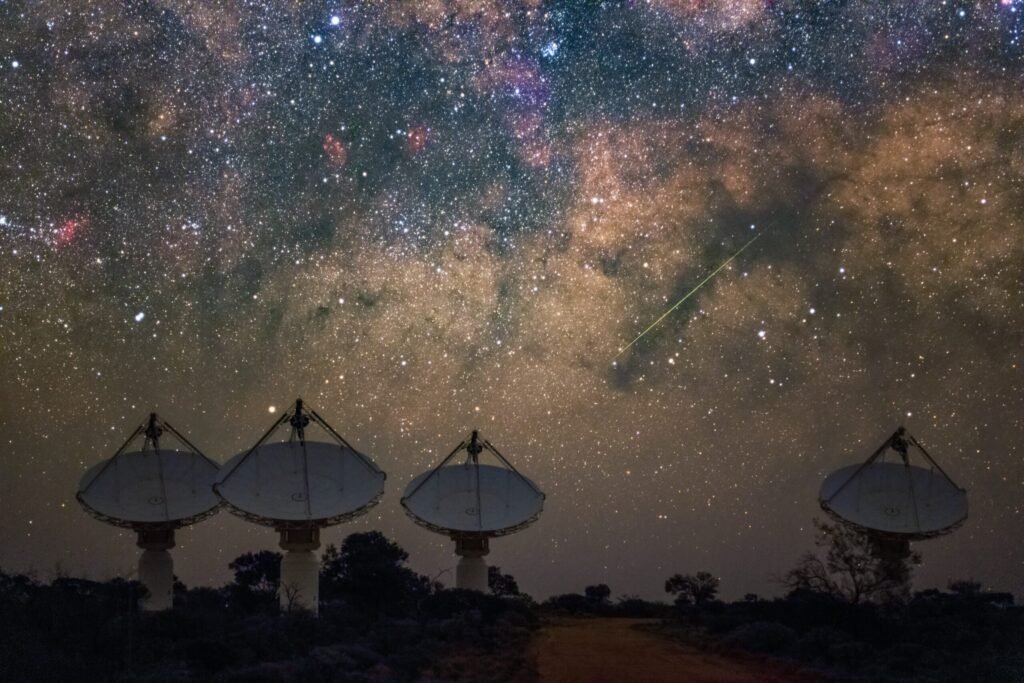Around midday on June 13 last year, my colleagues and I were scanning the skies when we thought we had discovered a strange and exciting new object in space. Using a huge radio telescope, we spotted a blindingly fast flash of radio waves that appeared to be coming from somewhere inside our galaxy.
After a year of research and analysis, we have finally pinned down the source of the signal — and it was even closer to home than we had ever expected.
A surprise in the desert
Our instrument was located at Inyarrimanha Ilgari Bundara, the CSIRO Murchison Radio-astronomy Observatory in remote Western Australia, where the sky above the red desert plains is vast and sublime.
We were using a new detector at the radio telescope known as the Australian Square Kilometre Array Pathfinder — or ASKAP — to search for rare flickering signals from distant galaxies called fast radio bursts.
We detected a burst. Surprisingly, it showed no evidence of a time delay between high and low frequencies — a phenomenon known as “dispersion”.
This meant it must have originated within a few hundred light years of Earth. In other words, it must have come from inside our galaxy — unlike other fast radio bursts which have come from billions of light years away.
A problem emerges
Fast radio bursts are the brightest radio flashes in the Universe, emitting 30 years’ worth of the Sun’s energy in less than a millisecond — and we only have hints of how they are produced.
Some theories suggest they are produced by “magnetars” — the highly magnetised cores of massive, dead stars — or arise from cosmic collisions between these dead stellar remnants. Regardless of how they occur, fast radio bursts are also a precise instrument for mapping out the so-called “missing matter” in our Universe.
When we went back over our recordings to take a closer a look at the radio burst, we had a surprise: the signal seemed to have disappeared. Two months of trial and error went by, until the problem was found.
ASKAP is composed of 36 antennas, which can be combined to act like one gigantic zoom lens six kilometres across. Just like a zoom lens on a camera, if you try to take a picture of something too close, it comes out blurry. Only by removing some of the antennas from the analysis — artificially reducing the size of our “lens” — did we finally make an image of the burst.









Hi, this is a comment.
To get started with moderating, editing, and deleting comments, please visit the Comments screen in the dashboard.
Commenter avatars come from Gravatar.